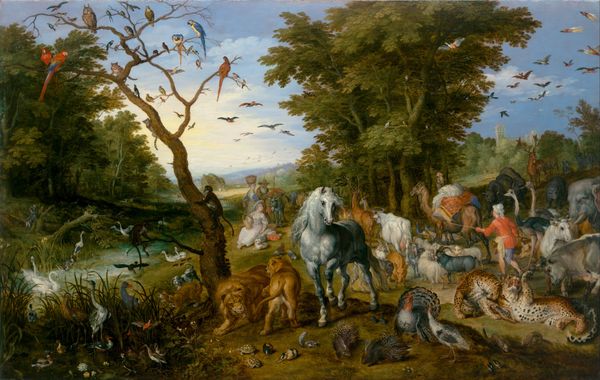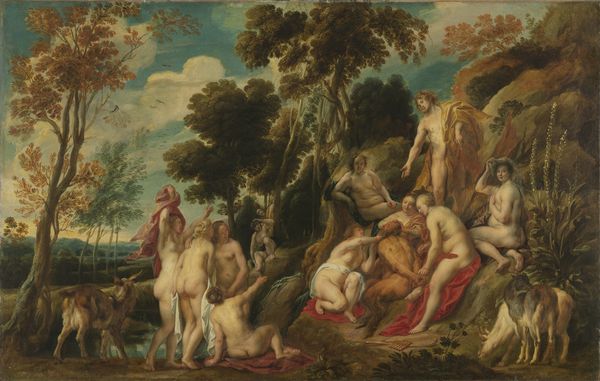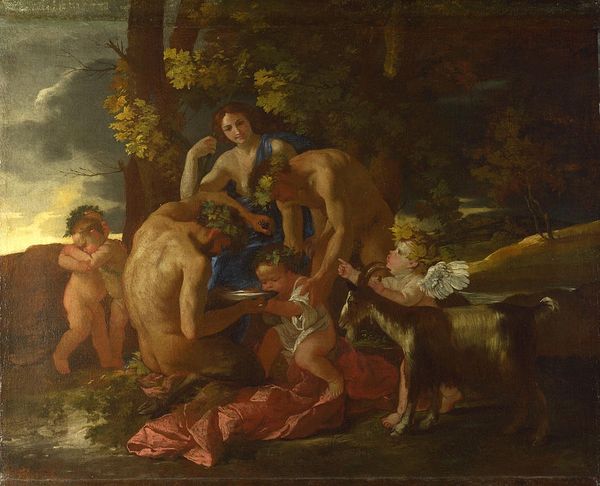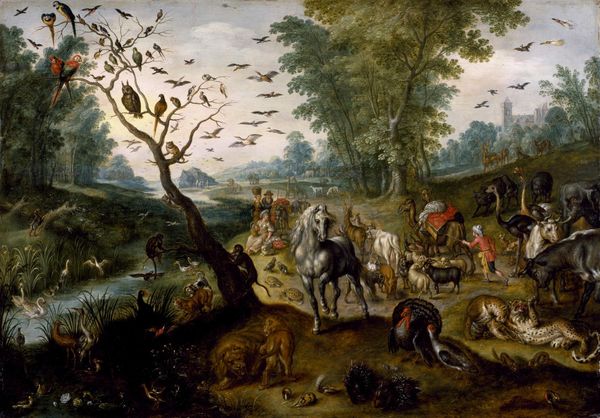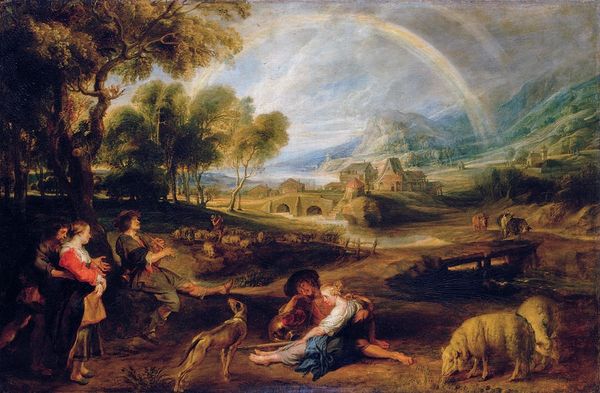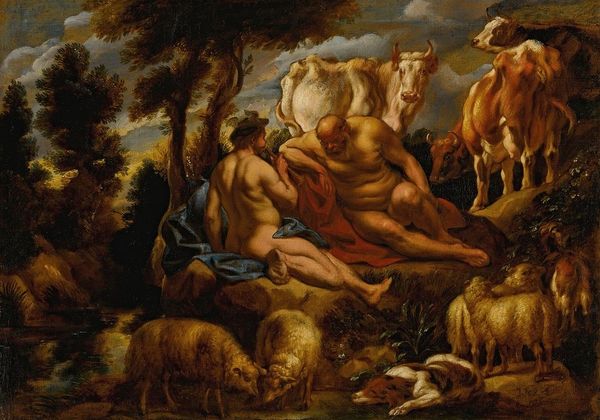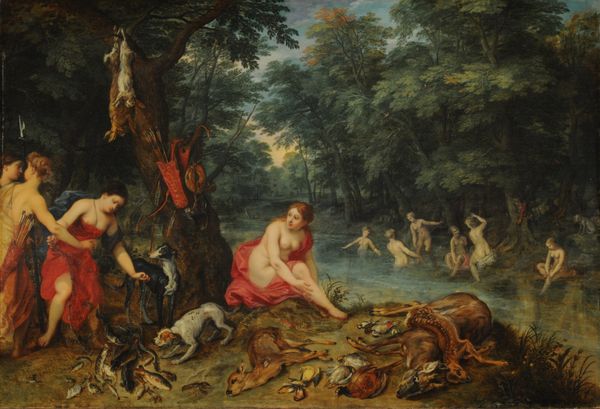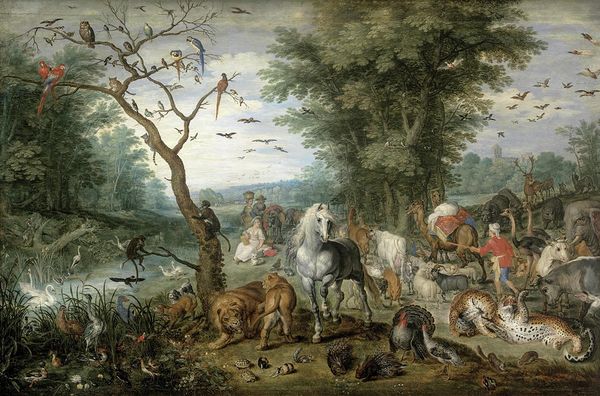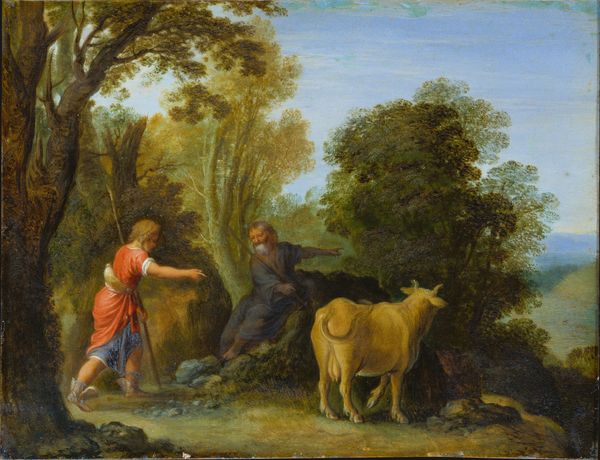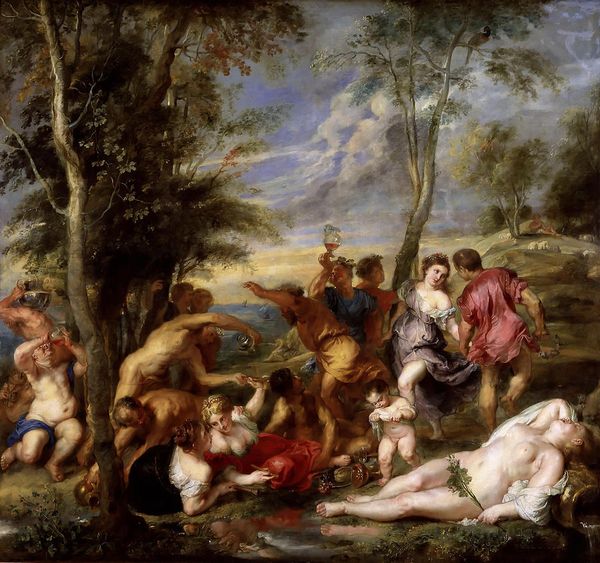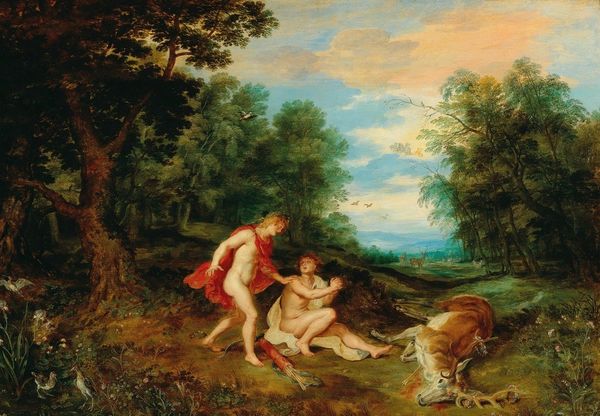
oil-paint
#
baroque
#
oil-paint
#
landscape
#
figuration
#
oil painting
#
mythology
#
history-painting
Copyright: Public Domain: Artvee
Curator: This oil painting is titled "Mercury, Argus and Io," brought to life by the Flemish Baroque painter Jacob Jordaens. Look closely at the scene he's depicted. Editor: What immediately strikes me is the overall pastoral mood—lush landscape, grazing cattle. Yet, there's an undeniable tension lurking beneath the surface. It's a bit unsettling, to be honest. Curator: Jordaens captured a crucial moment from Ovid’s *Metamorphoses*. Here, Mercury, sent by Jupiter, is about to slay Argus, the many-eyed giant tasked by Juno to guard Io, whom Jupiter has transformed into a heifer. Editor: The figure of Argus sprawled in slumber certainly embodies a classical masculine ideal, but seeing Mercury poised to strike feels jarring. It disrupts any romantic notions of Arcadia that might have initially surfaced. Is it me, or do these cows look almost complicit, like silent witnesses to the patriarchy? Curator: The ever-watchful eyes. Argus, as the guardian, becomes the symbol for surveillance and control but what happens after? Does his death truly free Io? The act of murder also shifts our perception of Mercury, who traditionally appears as this messenger and guide of souls. Editor: Absolutely, the painting forces us to acknowledge power dynamics, how the actions of gods and men impact the lives—the very bodies—of others. Io, as the white cow, becomes a visual reminder of female bodies caught up in patriarchal narratives. Her fate controlled and re-written by gods and mortals. Curator: Consider, too, how Jordaens portrays Mercury—his skin tone contrasts greatly with that of Argus. It evokes this idea of shifting roles and highlights this transitional, and highly decisive, act taking place. This transformation in Ovid's narrative becomes so much more poignant when reflected through these visual symbols. Editor: Right. And the presence of landscape itself can also reflect an allegory on the human condition. In my eyes, Jordaens has done an impressive work to underscore complex questions around desire, authority, and consequences in such a seemingly idyllic tableau. Curator: Yes, it makes you consider how mythology functions as more than mere story; instead it creates cultural blueprints that reveal deep truths about the human condition through symbolism. Editor: Ultimately, this tableau demonstrates the way in which paintings can expose the silent histories woven into beautiful scenery and familiar stories.
Comments
No comments
Be the first to comment and join the conversation on the ultimate creative platform.

